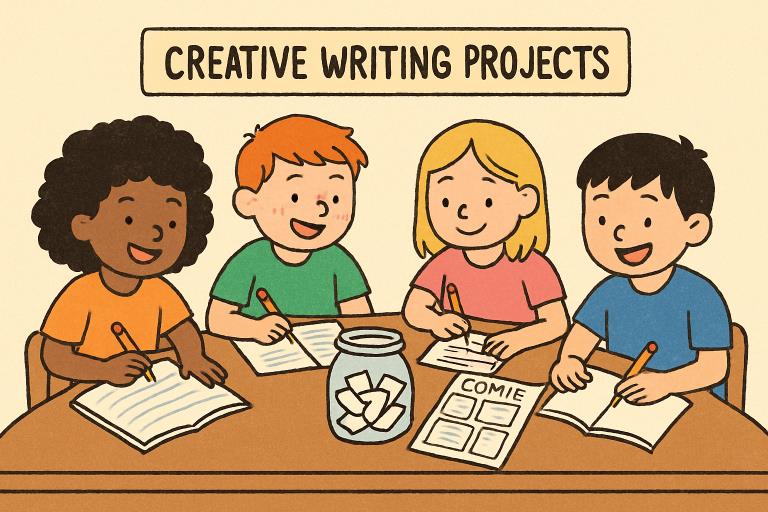Now Reading: Engaging Children in Civic Education Through Storytelling
-
01
Engaging Children in Civic Education Through Storytelling
Engaging Children in Civic Education Through Storytelling

Key Takeaways
- Storytelling is an effective tool for teaching children about civic processes.
- Fables and illustrated books can simplify complex political concepts.
- Early civic education fosters informed and responsible citizens for the future.
Introduction
Civic education lays the foundation for a well-functioning society by empowering even its youngest members to understand their roles and responsibilities. However, teaching civic concepts to children can be a daunting task. The abstract nature of political systems and the complexity of governmental processes can easily confuse and disengage young learners. Yet, by leveraging the power of storytelling, parents and educators can turn civic education into an engaging and accessible experience, allowing children to learn advanced concepts in a way that feels natural and enjoyable.
Children are naturally drawn to stories. Through familiar narratives, complex ideas become relatable and understandable, making civic lessons memorable. Incorporating storytelling into civic education not only sparks curiosity but also provides meaningful, age-appropriate entry points into complex subjects such as government, leadership, and individual rights.
A well-crafted story can plant the seeds of curiosity and responsibility. With the right materials and guidance, children start to see themselves as active members of their communities, shaping their future as responsible citizens. For more examples and deeper strategies, you can explore expert studies on the educational impact of narrative learning.
Teaching civics through stories isn’t just for the classroom. Reading together at home, drawing story-inspired illustrations, or acting out civic tales during family time can all reinforce vital lessons in creative ways.
The Power of Storytelling in Education
Stories capture children’s attention in ways that facts and figures cannot. Narratives transform passive learning into immersive experiences, building both empathy and understanding as children follow characters through challenges and growth. Whether it’s a fable or a modern picture book, stories allow children to see the world through different perspectives, making intangible civic concepts concrete. For instance, stories about sharing food or cooperating to solve problems can serve as relatable introductions to subjects like voting or community action.
Successful educational storytelling often involves memorable characters and simple plots that parallel real-life situations. Classic examples include tales where characters resolve conflicts democratically or stand up for fairness and justice, providing a scaffold for children to apply these lessons to real civic scenarios later.
Fables as Tools for Teaching Civic Concepts
Fables have long been a fixture of moral instruction, but their applicability to civic education is just as relevant. These short, allegorical tales simplify complex ethical and social concepts into digestible lessons for young minds. By reimagining traditional fables or creating new ones centered on voting, leadership, or public service, parents and teachers can make the mechanics of civic life more accessible.
For example, adapting the story of the “Tortoise and the Hare” into a lesson on persistence and fair competition can introduce the importance of equal opportunity and following rules. The intuitive morals embedded in these stories offer children practical blueprints for navigating political systems, respecting others’ rights, and actively participating in their communities. For additional approaches, consider consulting this comprehensive resource on teaching civics through literature.
Illustrated Books: Visual Learning Aids
Visual storytelling is a powerful complement to narratives, serving particularly well for children who are visual learners. Illustrated books bring characters and scenarios to life, helping children visualize abstract concepts related to civic life. Seeing a town meeting in a book, for example, can demystify ideas like governance and public debate.
The combination of expressive illustrations and thoughtfully crafted text enhances comprehension and retention. When children see diverse characters working together to solve community problems, they gain visual cues about inclusion, teamwork, and social responsibility—concepts at the heart of civic education.
Simplifying Complex Political Processes for Children
Breaking down complicated topics is essential for building a strong foundation in civics. Using simple, age-appropriate language is critical. Concepts such as “government” can be introduced as a group of people who make decisions for everyone, or “voting” as a way for everyone to choose what they believe is best.
Relatable examples, like classroom voting or sharing responsibilities at home, help connect big ideas to children’s everyday experiences. Role-playing games, flowcharts, and interactive discussions further clarify the steps and significance of civic processes in child-friendly ways.
The Role of Parents and Educators
Parents and educators play a pivotal role in guiding children through civic education materials. By participating in story sessions or reading together, adults model curiosity and civic engagement. They can prompt discussions about what fairness means, setting a positive example for their children, and how rules exist and how decisions are made in families or classrooms, mirroring the workings of larger communities.
Asking open-ended questions and encouraging children to share their opinions fosters confidence and active participation. This helps demystify politics and empowers children to feel that their voices can make a difference. Consistent encouragement and availability for discussion are key to nurturing responsible, civic-minded children.
Real-Life Applications and Activities
Story-inspired learning thrives when connected to real-life activities. Interactive games such as mock elections, role-playing as community leaders, and collaborative problem-solving help children experience civic processes firsthand. These activities are not only fun but also reinforce abstract concepts learned through stories and books.
Community involvement projects—like organizing a recycling drive or helping plan a family event—give children opportunities to practice leadership, cooperation, and decision-making in a tangible setting. These experiences lay the groundwork for lifelong civic participation and service.
Conclusion
Storytelling unlocks the door to effective civic education, inviting children to explore political processes with curiosity and joy. Fables, illustrated books, and interactive activities all work in harmony to demystify complex ideas and foster a sense of community responsibility from a young age. By weaving these strategies into homes and classrooms, parents and educators empower future generations to become informed, engaged citizens—ready to shape a better world.





















